What will you wear?
Francesca Gheller
If their sensibilities and personal stances are not questioned, people are not going to leave the comfort zone they have created for themselves. Everything that is distant doesn’t resonate loudly enough in a selfish mind.
The historic period we are currently experiencing has forced us into a reality from which we can’t distance ourselves and in which we need to assign the other the same value we have. Today more than ever, acting is in relation to the other. I will dress with a willingness to enhance aesthetics with a content. Knowing the phases of production of an item of clothing and sharing the philosophy that has inspired it, I will be able to give my buying process a deeper value.
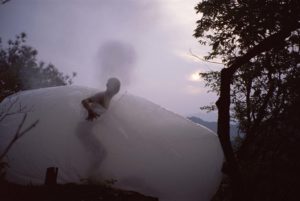
I also want to attach this picture – Zhu Ming, 10 O’Clock, July 27th, 2008, Cina – because it represents well what man should start doing: breaking out of the ‘bubble’ we live in, to acknowledge the real-life problems it’s shielding us from and reinvent our lifestyle in respect of the other.
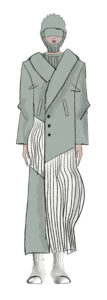

Elena Occhiena
The Amazon rainforest has been burning without interruption for months, and Australia too. Numerous animal species are at risk of disappearing completely.
Global warming, polluted waters, micro dust in air, arsons and the recent spreading of Covid-19 are only a small part of the damages caused by man.
What if these damages were also caused by fast fashion? To avoid any further devastation of the world, man must behave like a phoenix: being reborn from ashes stronger, before it’s too late. Like winged animals, with time man will be able to remedy the mistakes he’s made, to improve the world and lead to a rebirth.
The phoenix, which regenerates from its own ashes, and the concept of resilience are the inspirations behind the collection I’ve created for the thesis project I will present soon.
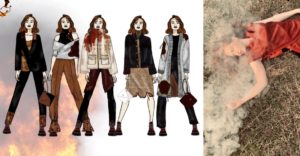
After causing so much damage, we must be able to get back on our feet.
I would like to present a sustainable collection for the environment and man, in which the caused damages, the ruins and the ashes undergo a stylistic repair to create something beautiful and usable again. It will show the ability to be reborn stronger than before, not by deleting mistakes but by remembering them as strong points for a new beginning.
A new beginning also from fashion’s point of view, through the use of fabrics mainly made of natural fibres or remnants from the warehouses of big textile companies, and of dyes of natural origins.
Sara Virginia Salvio
It’s not easy to define what we can expect from the future, it’s never been.
It’s not easy to define what we can and cannot do, but it’s even too easy to establish boundaries between what’s lawful and unlawful, and to understand the tremendous importance of not crossing them.
The sudden break out of a global pandemic, of a physical and mental sufferance, has forced us to deal with a time we’ve not being valuing anymore unless it’s quantifiable in revenue earning terms. Do we still know what to do with it?
In a society in which relationships and communication are managed in the illusion of proximity, in a virtual non-space, the virus has deprived us of true proximity, the real one.
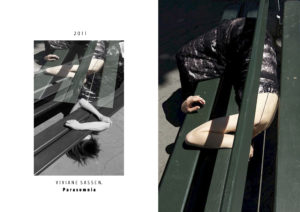
We must use this moment to redefine priorities. We need to understand, as consumers, customers, or mere human beings, that time is the only luxury we have.
A time that the fashion industry itself has shattered by producing an excessive amount of clothes simply and exclusively to feed man’s need for the pleasure of the ‘new’.
We should deconstruct, reinstate and reset the concept of beauty.
And if the body could tell stories, scars would definitely be the words it’d use. A body not to dress, but to inhabit.
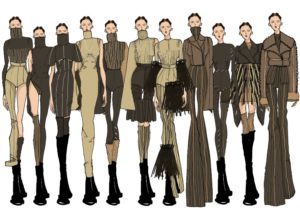
Descartes saw the body as a dwelling, a temporary home for the soul. And if the human body has always been the most effective way to visualise and realise our ‘social body’, that’s where we have to start from. From our body and from what we wear. Because an item of clothing is never an end in itself, it’s interdependent with our body.
I will get dressed every day in the awareness that we all have the scars of countless mistakes sewn on ourselves, and that it’s down to us to understand what colour we want to live in, whether in black or white.

